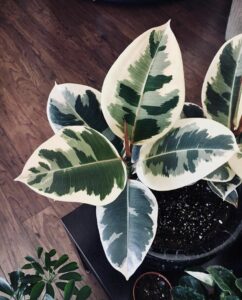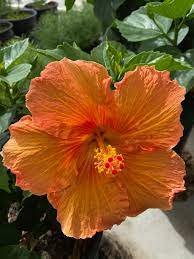The complete guide to conservatory plant care
These top tips will help you take care of your conservatory plants, from choosing the right plants to nurturing them, to how to do it.

Are you blessed with a well-built conservatory?
There are many ways to make any room in your home an extension of your house. This guide will show you how to enhance your conservatory by adding beautiful greenery.
Make your space work
Our desire to live with green plants goes back to Victorian greenhouses. Glass buildings were traditionally used to preserve rare species. Today, we want to recreate the beauty, romance, color, and fragrance that you feel when you inhale the warm, humid atmosphere of a greenhouse. We can explore our desire to “grow” in a variety of places, including a conservatory, orangery or pool room, porch, or even simple windowsills.
There are subtle differences in the environments each building can provide. Ask yourself what you want to achieve, whether it is a modern statement or a lush green oasis. You should also be honest about how much light, shade, heat, winter, humidity, attention, and to care you can give your plants. Also, where would you like them to be located and why?
- Because the direction of your space is important, it will be necessary to determine which direction the light, heat, and cold are experienced by the plants.
- Conservatories are most effective if they are not overheated in summer.
- Therefore, south-facing conservatories need plenty of ventilation and external blinds that can easily be pulled down in bright weather, from April to September.
- North-facing conservatories work better in summer but must be able to withstand low light in winter.
- It’s not just about the aspect of the house, but also its size. When it comes to conservatories, volume matters – the larger the volume, the better the conditions. This means that there are fewer extremes or fluctuations in temperature which, in turn, results in happier plants.
Choose the right plants
Start with plants that are tolerant of sunlight if you’re a complete beginner. Succulents and cacti are good for beginners because they love the sun and only require occasional watering. If they’re happy enough, they might even produce a few flowers.
Finding the right plants for your space can be a challenge. However, here are top choices for conservatory plants:

- Ficus Tineke
- Ficus Abidjian
- Shangri-La Philodendron
- Ginny Mini Monstera
- Blue Star Fern
- Raindrop Peperomia
- Goldfinger(tm) Hardy Schefflera
- Begonias Tectonic ™.
- Jazzy Jewel ™ Hibiscus

If your goal is to find something exotic and colorful for special design elements, citrus trees will produce more fruit when placed in a sunny area. They will also be happier indoors when it’s warm. Fiddle leaf figs are a statement plant that loves light. However, they need to be kept at a steady temperature because they can be sensitive.
A rare variegated monstera is a truly special plant. However, it will thrive in bright sunlight. In winter, however, keep it out of cold drafts as they can cause damage to their delicate leaves.
Every space that I have seen in the past 30 years has been unique. Creating height, width and a waterfall full of flowers and foliage is a challenge in any building. But there’s always a way.
- The type of building and the design will determine the plants that you can grow, and where they are from.
- The climate and light levels of a garden room with a solid roof and glazed sides (windows or doors) are often conducive to growing tropical plants, also known as houseplants.
- These plants like to live under the shade of a forest canopy, which blocks sunlight and provides a similar temperature year-round.
- Certain groups of ornamental plant species like the Mediterranean ones that love a glass roof with no shade in winter and a little shade during the summer. This climate is also appreciated by South American plants, but they prefer a little more shade in the summer. To thrive, South African species need full sun all year.
Care for conservatory plants
You’ve chosen your favorite plants and they look great. But how do you care for them?
- Light can make any space more attractive for plants all year. Keep your windows clean and trim any shade-loving plants. If you don’t have an extremely sunny area, adding artificial light or mirrors can help.
- While light is great, heat can be dangerous so limit heat stress in summer and place plants outside in the shade.
- Avoid overwatering in winter when the light levels are low. If you want to keep your plants healthy and happy, repot every 2 years with potting compost that is suitable for indoor plants.
- You can also use liquid feed every fortnight if the plants are in summer. You can also check your plants for pests daily or more often to introduce biological controls.
- Even the most hardy plants prefer stable temperatures. Keep them away from cold drafts and warm radiators in winter. Your plant will also be comfortable if it is comfortable in the room.
